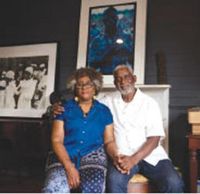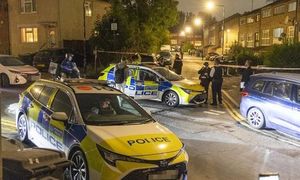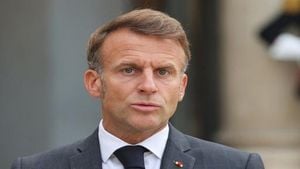Twenty years ago, on August 29, 2005, Hurricane Katrina slammed into New Orleans, unleashing devastation that would reshape the city and the nation’s understanding of climate risk, systemic inequality, and the limits of government response. As the city marks this somber anniversary on September 2, 2025, residents and observers alike are reflecting not only on the harrowing days of the storm, but also on the two decades of recovery, frustration, and hope that have followed.
According to The San Juan Daily Star, the mood in New Orleans this week is complicated. There’s pride in survival, yes, but also a growing impatience with dysfunction and a yearning for something more than just endurance. Erander Guss-Lee, a local security guard, captured this sentiment: “We’re still here. Believe that.” Her words echo the city’s resilience, but they also hint at a deeper fatigue—one that comes from years of struggling to rebuild, only to face fresh crises and disappointments.
Hurricane Katrina was more than a natural disaster. As reported by 350.org, it was a climate-fueled catastrophe, supercharged by rising sea temperatures linked to fossil fuel emissions. The storm’s impact was multiplied by human choices—by government failures, by the neglect of marginalized communities, and by the relentless pursuit of profit in the wake of tragedy. The majority Black population of New Orleans was left stranded, waiting in unbearable heat for food, water, and medical care. When help did arrive, it often took the form of the National Guard treating desperate survivors as security threats rather than neighbors in need.
This pattern—where the most vulnerable are left behind and then further marginalized—has repeated itself in climate emergencies around the world. Katrina also became the textbook example of what author Naomi Klein dubbed “disaster capitalism.” In the aftermath, public housing was left in ruins, and the city’s public schools were replaced with private charters, all while basic services and homes languished unrepaired. As Milton Friedman, the influential economist, wrote at the time, the destruction of public schools was “an opportunity for permanent reform.” For many, those reforms meant displacement and exclusion, not progress.
The legacy of Katrina is not just about what happened in 2005, but about the choices made in its wake—and the choices facing New Orleans today. Just a year before the storm, Louisiana had requested funds from the Federal Emergency Management Agency (FEMA) to bolster hurricane preparedness. The request was denied. The Bush administration had slashed federal disaster mitigation programs while boosting investment in private emergency management firms. When Katrina struck, the official response was sluggish and chaotic, and behind closed doors, officials and industry leaders crafted a relief plan that bundled market reforms with expanded oil and gas drilling—the very industry whose emissions had helped fuel the storm’s ferocity.
Atmospheric CO2 levels tell a stark story. In 2005, the concentration stood at 379 parts per million. Today, it’s 428 ppm. And in 2024, the world breached the 1.5°C global warming threshold for the first time in recorded history. Scientists warn that every fraction of a degree matters: even a 0.1°C increase can significantly intensify hurricanes, translating directly into lives saved or lost. Yet, as 350.org notes, fossil fuel corporations are doubling down, betting that the world will remain hooked on oil and gas for decades. They’re ramping up exploration and lobbying to lock in new infrastructure, even as climate disasters become more frequent and severe.
Meanwhile, the systems meant to protect people are under renewed threat. Thirty-six FEMA workers recently signed a letter protesting budget cuts, with 141 more signing anonymously for fear of retribution. Weather monitoring services face similar threats. “At the very moment when climate disasters are becoming more frequent and more intense, we are dismantling the very systems that keep people safe,” 350.org warns. It’s a chilling reminder of how history can repeat itself when lessons go unheeded.
For many in New Orleans, the past two decades have been a rollercoaster. As The San Juan Daily Star reports, the city has weathered a deadly terrorist attack on Bourbon Street, another hurricane that knocked out power and disrupted trash collection, and a pandemic that paralyzed the local economy and triggered a surge in violence. Yet, despite these blows, the city’s population continues to shrink—especially among Black residents, who now number about 120,000 fewer than before Katrina. The homeownership gap between Black and white residents, which had narrowed in the years after the storm, is widening again.
Frustration with local government is palpable. Mayor LaToya Cantrell, recently indicted on charges of misusing public funds for a romantic relationship with her police bodyguard, has been criticized for disengagement. A new mayoral election is set for this fall, and many see it as a pivotal moment. “People feel that the city is at a tipping point, and that if we don’t get this next mayoral election right, we’re going to spiral downward,” said Edward Chervenak, director of the University of New Orleans Survey Research Center.
Infrastructure woes are a constant source of anger. “Traffic lights aren’t working, the streetlights aren’t working, the drainage pumps aren’t working, and City Hall is not working,” Chervenak added. Insurance premiums for homes and cars have soared to unaffordable levels, and locals lament the city’s increasing reliance on tourism—a sector that mostly provides low-wage jobs. “That’s who this city caters to,” said Charles Taylor, gesturing toward tourists on Bourbon Street.
Yet, not all is bleak. Lamar Gardere, executive director of the Data Center, pointed out that some infrastructure has improved since Katrina, notably the drainage system, which now moves more water than most U.S. cities. He likened the city’s journey to that of its beloved Saints football team: “The expectations aren’t high, and we know we don’t have the same resources we’ve had before. But we know we can be successful.”
Still, climate risks loom large. The Trump administration has rolled back efforts to combat climate change, a move with dire consequences for low-lying coastal communities like New Orleans. The White House is reportedly considering whether FEMA should even continue playing a role in disaster recovery. Governor Jeff Landry’s decision to scrap a major wetlands restoration project this year has only heightened anxieties, as those wetlands serve as a natural buffer against hurricanes—and have been vanishing at an alarming rate.
For residents like Chandra McCormick, a photographer who has documented the city for decades, the future remains uncertain. “What remains a mystery,” she said, “is where are we heading?”
In the French Quarter, Larry Robinson, 65, reflected on the passage of time and personal loss. His mother drowned during Katrina. “I remember I was in jail at the time, far from New Orleans, and when they told me what happened to my mother, it took me a few seconds to catch my breath,” he recalled. “Time is a son of a gun.”
At an art exhibition marking the anniversary, Carlos Talbott, who photographed the city’s destruction, was more interested in the future than the past. “Something unbelievably horrible happened to us,” he said. “But the Earth doesn’t stop, right? We’re still going.”
Twenty years on, Katrina’s lessons remain urgent. The stakes are higher now, with a hotter world and more frequent disasters. But as New Orleans faces its next chapter, one thing is clear: the outcome is not inevitable. Every act of resilience and solidarity still matters—and the people of New Orleans, battered but unbowed, continue to write their own story.




